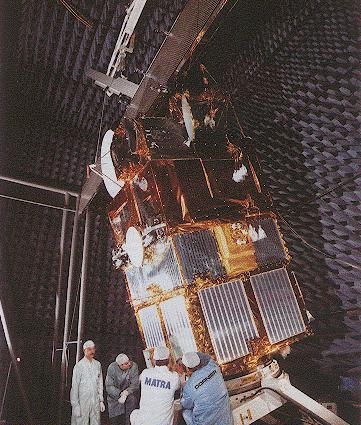
ESA's low altitude Earth observation system debuted in 1991 with the
launch of ERS-1. The culmination of a 10-year
development project led by Germany, ERS-1 hosts a suite of precision
instruments tailored for a comprehensive environmental
monitoring program with objectives including:
* a much more accurate representation of the
interactions between ocean and atmosphere in climatic models,
* a major advance in our knowledge of ocean
circulation, its variability and the associated energy transfers,
* better monitoring of polar regions, in particular
the Arctic and Antarctic ice sheets and sea-ice-covered areas,
* a more comprehensive understanding of coastal
processes and surface pollution, including erosion, sedimentation,
coastal currents, estuarine fronts and circulation,
* the regular monitoring of land-surface processes
on a global scale, and in particular the vegetation cover,
* the monitoring of changing land-use patterns,
* offering a unique all-weather sensing capability
for disaster observation and assessment, and
* enhancing the data available for operational
meteorology, in particular observation ofwinds near the sea surface,
sea-state, seasurface temperature measurements,
cloudfields, atmospheric water content, and seaice distribution"
